Escaping the crowds on a Tanzanian safari
Safaris are meant to be full of blissful moments of serenity. Listening to the various calls of lapwings and rollers on the open plains, smelling the fresh water of the cascading rivers that meander through the landscape and the feeling of being at one with nature is the reason people travel half-way across the world to explore the vast wildernesses of Africa.
 The problem however, is that if you don’t know what camp to go to or what park to visit, you can become bogged down by busy sightings, long queues and noise pollution that doesn’t allow you to experience nature in all its serenity. Below we have an insight into the best ways to avoid the crowds whilst you’re visiting Tanzania.
The Serengeti
The Great Migration of wildebeest is a world famous spectacle – and rightly so. All year millions of wildebeests and hundreds of thousands of zebra take on a journey that sees them battle numerous dangers in an attempt to follow the rains. From August through to the end of October is when the wildebeest are normally seen crossing the Mara River and this well documented period of the drama is of course when the majority of visitors come to see the wildlife. Each year though, more and more videos surface online that shows far too many vehicles in one area.
The key to observing wildlife is to enjoy the exclusiveness of your sighting, especially if you’re a photographer. The last thing you would want is a vehicle obstructing your chance to grab that ‘once-in-a-lifetime-shot’.
The problem however, is that if you don’t know what camp to go to or what park to visit, you can become bogged down by busy sightings, long queues and noise pollution that doesn’t allow you to experience nature in all its serenity. Below we have an insight into the best ways to avoid the crowds whilst you’re visiting Tanzania.
The Serengeti
The Great Migration of wildebeest is a world famous spectacle – and rightly so. All year millions of wildebeests and hundreds of thousands of zebra take on a journey that sees them battle numerous dangers in an attempt to follow the rains. From August through to the end of October is when the wildebeest are normally seen crossing the Mara River and this well documented period of the drama is of course when the majority of visitors come to see the wildlife. Each year though, more and more videos surface online that shows far too many vehicles in one area.
The key to observing wildlife is to enjoy the exclusiveness of your sighting, especially if you’re a photographer. The last thing you would want is a vehicle obstructing your chance to grab that ‘once-in-a-lifetime-shot’.
 It is therefore worth spending a little bit more time and money by flying across to the Lamai Wedge. This triangular area of land is cornered between the Mara River and the Masai Mara in Kenya. Due to the extra travel involved, there are generally less visitors on this side of the river allowing exclusivity that is hard to come by, especially in the busy months.
It is therefore worth spending a little bit more time and money by flying across to the Lamai Wedge. This triangular area of land is cornered between the Mara River and the Masai Mara in Kenya. Due to the extra travel involved, there are generally less visitors on this side of the river allowing exclusivity that is hard to come by, especially in the busy months.
 Although the migration moves year-round, the majority of visitors who come to the Serengeti do flock to wherever the migration happens to be. If you are thinking of visiting the Serengeti but want to avoid these crowds, inform yourself on where the migration is and head to the opposite area of the park. No matter the time of year, there will be resident game such as lions, elephants, cheetahs and a whole host of other game that does not follow the wildebeest’s migratory route.
If you do however want to see the migration but still avoid the crowds then picking the correct lodge for you is vital to your stay. For example, Namiri Plains is a camp located over forty-five minutes from another camp and over an hour and a half away from the central Serengeti region. This means that sightings are often exclusive and private giving guests the best possible opportunity to observe and spend time with the wildlife in the area. In the months when the migration ventures into the Eastern section where Namiri lies, other camp’s vehicles can only get to that area late in the morning when you’re already back at camp!
Although the migration moves year-round, the majority of visitors who come to the Serengeti do flock to wherever the migration happens to be. If you are thinking of visiting the Serengeti but want to avoid these crowds, inform yourself on where the migration is and head to the opposite area of the park. No matter the time of year, there will be resident game such as lions, elephants, cheetahs and a whole host of other game that does not follow the wildebeest’s migratory route.
If you do however want to see the migration but still avoid the crowds then picking the correct lodge for you is vital to your stay. For example, Namiri Plains is a camp located over forty-five minutes from another camp and over an hour and a half away from the central Serengeti region. This means that sightings are often exclusive and private giving guests the best possible opportunity to observe and spend time with the wildlife in the area. In the months when the migration ventures into the Eastern section where Namiri lies, other camp’s vehicles can only get to that area late in the morning when you’re already back at camp!
 Don’t be put off by the rain. Many people avoid the Serengeti during the rainy season, but this is often when the best sightings occur. Camps will have vehicles designed to cope with any deluge and the prospect of rain drives away the majority of people. Don’t forget this also sees a drop in most lodge prices! The prospect of rain isn’t always fulfilled and visits to the Serengeti in the ‘rainy months’ often sees guests coming away with intimate and relaxed sightings with some exceptional photos.
Don’t be put off by the rain. Many people avoid the Serengeti during the rainy season, but this is often when the best sightings occur. Camps will have vehicles designed to cope with any deluge and the prospect of rain drives away the majority of people. Don’t forget this also sees a drop in most lodge prices! The prospect of rain isn’t always fulfilled and visits to the Serengeti in the ‘rainy months’ often sees guests coming away with intimate and relaxed sightings with some exceptional photos.
 The South
Southern Tanzania has often lived in the shadow of the famous North. Whilst the Serengeti and the Ngorongoro Crater pull in the majority of visitors, it is the seclusion and privacy that is easily available in the South of Tanzania that makes it such an attractive destination.
The South
Southern Tanzania has often lived in the shadow of the famous North. Whilst the Serengeti and the Ngorongoro Crater pull in the majority of visitors, it is the seclusion and privacy that is easily available in the South of Tanzania that makes it such an attractive destination.
 Selous is a huge game reserve and isn’t to be confused with a national park. Made up of a variety of different concessions, the Selous is so big that it’s quite normal not to see another vehicle whilst out on game drive. It is extremely accessible from Dar es Salaam and its range of activities like boat safaris, walking safaris and fishing mean that most guests are dispersed through the differing activities so there is little chance of over-crowding. Affordable luxury accommodation also caters for more price conscious travellers.
Selous is a huge game reserve and isn’t to be confused with a national park. Made up of a variety of different concessions, the Selous is so big that it’s quite normal not to see another vehicle whilst out on game drive. It is extremely accessible from Dar es Salaam and its range of activities like boat safaris, walking safaris and fishing mean that most guests are dispersed through the differing activities so there is little chance of over-crowding. Affordable luxury accommodation also caters for more price conscious travellers.
 Unlike the national parks, off-roading is allowed in the Selous which offers fantastic opportunities to get closer to the animals and it provides magnificent photographic opportunities. It also allows you to keep up with the highly endangered wild dogs as they swiftly weave in between shrubs and bushes in search of prey.
Ruaha is even more wild and untamed than Selous. Located further away from Dar es Salaam, the slightly pricier flights often deter people from travelling here. This national park is the size of Kruger in South Africa but only has a handful of lodges. This means areas of this remote wilderness have hardly been explored and sightings are private and intimate.
Unlike the national parks, off-roading is allowed in the Selous which offers fantastic opportunities to get closer to the animals and it provides magnificent photographic opportunities. It also allows you to keep up with the highly endangered wild dogs as they swiftly weave in between shrubs and bushes in search of prey.
Ruaha is even more wild and untamed than Selous. Located further away from Dar es Salaam, the slightly pricier flights often deter people from travelling here. This national park is the size of Kruger in South Africa but only has a handful of lodges. This means areas of this remote wilderness have hardly been explored and sightings are private and intimate.
 Jongomero is a beautiful camp nestled on the corner of a dry river bed that offers splendid views. Located hours away from the main airstrip, Jongomero has its own quiet corner of Ruaha in the South of the park. It is rare to see another vehicle whilst out on game drive down here and the huge herds of elephant and buffalo are abundant. Lions follow the buffalo relentlessly and predator, prey interactions are frequently seen.
Jongomero is a beautiful camp nestled on the corner of a dry river bed that offers splendid views. Located hours away from the main airstrip, Jongomero has its own quiet corner of Ruaha in the South of the park. It is rare to see another vehicle whilst out on game drive down here and the huge herds of elephant and buffalo are abundant. Lions follow the buffalo relentlessly and predator, prey interactions are frequently seen.
 Both Selous and Ruaha are unique in their own ways. Whilst Selous has the meandering waterways that bubble with hippos and crocodiles, Ruaha is a far drier habitat where the wildlife of Southern Africa and Eastern Africa come together. With a vast array of flora and fauna, there are so many different things for you to see in the South of Tanzania without the crowds that often plague other safari locations throughout the world.
If you have the time (and budget) a mixture of the North and South of Tanzania is definitely a must!
Marc Harris is Managing Director of Tanzania Odyssey. Tanzania Odyssey is a leading tour operator that has specialised in Tanzania since 1998.
If you would like to be a guest blogger on A Luxury Travel Blog in order to raise your profile, please contact us.
Both Selous and Ruaha are unique in their own ways. Whilst Selous has the meandering waterways that bubble with hippos and crocodiles, Ruaha is a far drier habitat where the wildlife of Southern Africa and Eastern Africa come together. With a vast array of flora and fauna, there are so many different things for you to see in the South of Tanzania without the crowds that often plague other safari locations throughout the world.
If you have the time (and budget) a mixture of the North and South of Tanzania is definitely a must!
Marc Harris is Managing Director of Tanzania Odyssey. Tanzania Odyssey is a leading tour operator that has specialised in Tanzania since 1998.
If you would like to be a guest blogger on A Luxury Travel Blog in order to raise your profile, please contact us.
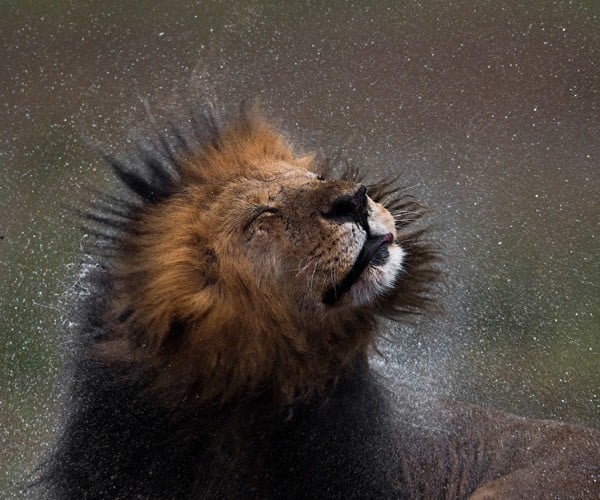 The problem however, is that if you don’t know what camp to go to or what park to visit, you can become bogged down by busy sightings, long queues and noise pollution that doesn’t allow you to experience nature in all its serenity. Below we have an insight into the best ways to avoid the crowds whilst you’re visiting Tanzania.
The Serengeti
The Great Migration of wildebeest is a world famous spectacle – and rightly so. All year millions of wildebeests and hundreds of thousands of zebra take on a journey that sees them battle numerous dangers in an attempt to follow the rains. From August through to the end of October is when the wildebeest are normally seen crossing the Mara River and this well documented period of the drama is of course when the majority of visitors come to see the wildlife. Each year though, more and more videos surface online that shows far too many vehicles in one area.
The key to observing wildlife is to enjoy the exclusiveness of your sighting, especially if you’re a photographer. The last thing you would want is a vehicle obstructing your chance to grab that ‘once-in-a-lifetime-shot’.
The problem however, is that if you don’t know what camp to go to or what park to visit, you can become bogged down by busy sightings, long queues and noise pollution that doesn’t allow you to experience nature in all its serenity. Below we have an insight into the best ways to avoid the crowds whilst you’re visiting Tanzania.
The Serengeti
The Great Migration of wildebeest is a world famous spectacle – and rightly so. All year millions of wildebeests and hundreds of thousands of zebra take on a journey that sees them battle numerous dangers in an attempt to follow the rains. From August through to the end of October is when the wildebeest are normally seen crossing the Mara River and this well documented period of the drama is of course when the majority of visitors come to see the wildlife. Each year though, more and more videos surface online that shows far too many vehicles in one area.
The key to observing wildlife is to enjoy the exclusiveness of your sighting, especially if you’re a photographer. The last thing you would want is a vehicle obstructing your chance to grab that ‘once-in-a-lifetime-shot’.
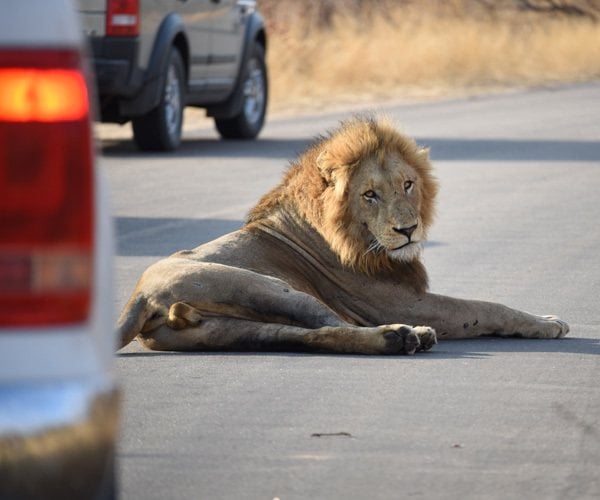 It is therefore worth spending a little bit more time and money by flying across to the Lamai Wedge. This triangular area of land is cornered between the Mara River and the Masai Mara in Kenya. Due to the extra travel involved, there are generally less visitors on this side of the river allowing exclusivity that is hard to come by, especially in the busy months.
It is therefore worth spending a little bit more time and money by flying across to the Lamai Wedge. This triangular area of land is cornered between the Mara River and the Masai Mara in Kenya. Due to the extra travel involved, there are generally less visitors on this side of the river allowing exclusivity that is hard to come by, especially in the busy months.
 Although the migration moves year-round, the majority of visitors who come to the Serengeti do flock to wherever the migration happens to be. If you are thinking of visiting the Serengeti but want to avoid these crowds, inform yourself on where the migration is and head to the opposite area of the park. No matter the time of year, there will be resident game such as lions, elephants, cheetahs and a whole host of other game that does not follow the wildebeest’s migratory route.
If you do however want to see the migration but still avoid the crowds then picking the correct lodge for you is vital to your stay. For example, Namiri Plains is a camp located over forty-five minutes from another camp and over an hour and a half away from the central Serengeti region. This means that sightings are often exclusive and private giving guests the best possible opportunity to observe and spend time with the wildlife in the area. In the months when the migration ventures into the Eastern section where Namiri lies, other camp’s vehicles can only get to that area late in the morning when you’re already back at camp!
Although the migration moves year-round, the majority of visitors who come to the Serengeti do flock to wherever the migration happens to be. If you are thinking of visiting the Serengeti but want to avoid these crowds, inform yourself on where the migration is and head to the opposite area of the park. No matter the time of year, there will be resident game such as lions, elephants, cheetahs and a whole host of other game that does not follow the wildebeest’s migratory route.
If you do however want to see the migration but still avoid the crowds then picking the correct lodge for you is vital to your stay. For example, Namiri Plains is a camp located over forty-five minutes from another camp and over an hour and a half away from the central Serengeti region. This means that sightings are often exclusive and private giving guests the best possible opportunity to observe and spend time with the wildlife in the area. In the months when the migration ventures into the Eastern section where Namiri lies, other camp’s vehicles can only get to that area late in the morning when you’re already back at camp!
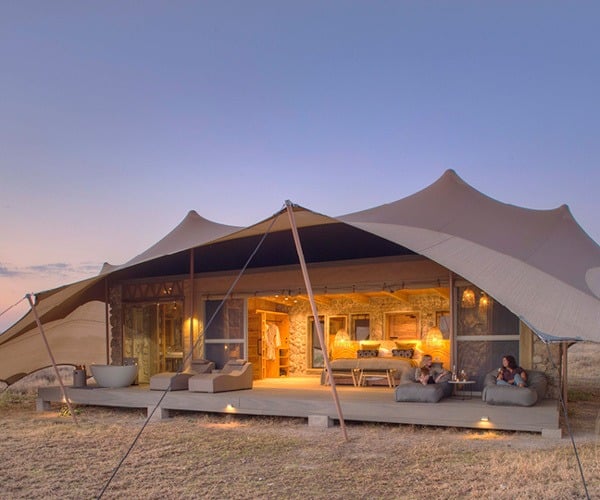 Don’t be put off by the rain. Many people avoid the Serengeti during the rainy season, but this is often when the best sightings occur. Camps will have vehicles designed to cope with any deluge and the prospect of rain drives away the majority of people. Don’t forget this also sees a drop in most lodge prices! The prospect of rain isn’t always fulfilled and visits to the Serengeti in the ‘rainy months’ often sees guests coming away with intimate and relaxed sightings with some exceptional photos.
Don’t be put off by the rain. Many people avoid the Serengeti during the rainy season, but this is often when the best sightings occur. Camps will have vehicles designed to cope with any deluge and the prospect of rain drives away the majority of people. Don’t forget this also sees a drop in most lodge prices! The prospect of rain isn’t always fulfilled and visits to the Serengeti in the ‘rainy months’ often sees guests coming away with intimate and relaxed sightings with some exceptional photos.
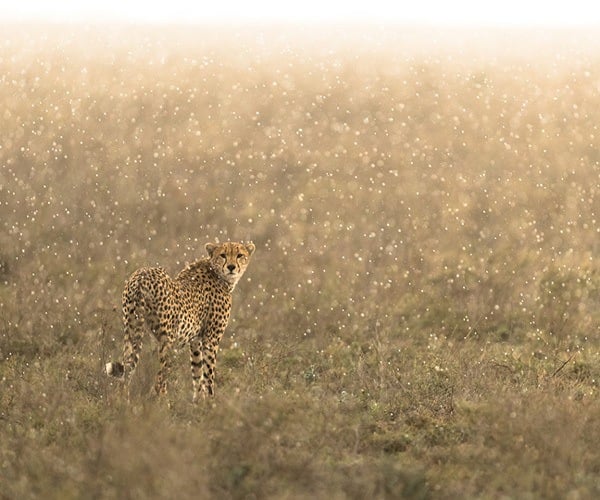 The South
Southern Tanzania has often lived in the shadow of the famous North. Whilst the Serengeti and the Ngorongoro Crater pull in the majority of visitors, it is the seclusion and privacy that is easily available in the South of Tanzania that makes it such an attractive destination.
The South
Southern Tanzania has often lived in the shadow of the famous North. Whilst the Serengeti and the Ngorongoro Crater pull in the majority of visitors, it is the seclusion and privacy that is easily available in the South of Tanzania that makes it such an attractive destination.
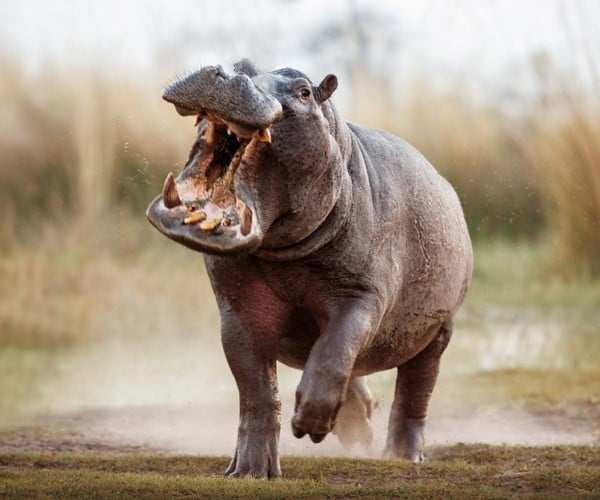 Selous is a huge game reserve and isn’t to be confused with a national park. Made up of a variety of different concessions, the Selous is so big that it’s quite normal not to see another vehicle whilst out on game drive. It is extremely accessible from Dar es Salaam and its range of activities like boat safaris, walking safaris and fishing mean that most guests are dispersed through the differing activities so there is little chance of over-crowding. Affordable luxury accommodation also caters for more price conscious travellers.
Selous is a huge game reserve and isn’t to be confused with a national park. Made up of a variety of different concessions, the Selous is so big that it’s quite normal not to see another vehicle whilst out on game drive. It is extremely accessible from Dar es Salaam and its range of activities like boat safaris, walking safaris and fishing mean that most guests are dispersed through the differing activities so there is little chance of over-crowding. Affordable luxury accommodation also caters for more price conscious travellers.
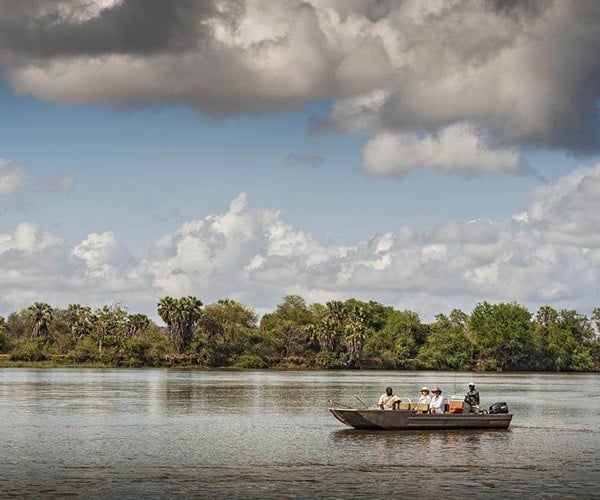 Unlike the national parks, off-roading is allowed in the Selous which offers fantastic opportunities to get closer to the animals and it provides magnificent photographic opportunities. It also allows you to keep up with the highly endangered wild dogs as they swiftly weave in between shrubs and bushes in search of prey.
Ruaha is even more wild and untamed than Selous. Located further away from Dar es Salaam, the slightly pricier flights often deter people from travelling here. This national park is the size of Kruger in South Africa but only has a handful of lodges. This means areas of this remote wilderness have hardly been explored and sightings are private and intimate.
Unlike the national parks, off-roading is allowed in the Selous which offers fantastic opportunities to get closer to the animals and it provides magnificent photographic opportunities. It also allows you to keep up with the highly endangered wild dogs as they swiftly weave in between shrubs and bushes in search of prey.
Ruaha is even more wild and untamed than Selous. Located further away from Dar es Salaam, the slightly pricier flights often deter people from travelling here. This national park is the size of Kruger in South Africa but only has a handful of lodges. This means areas of this remote wilderness have hardly been explored and sightings are private and intimate.
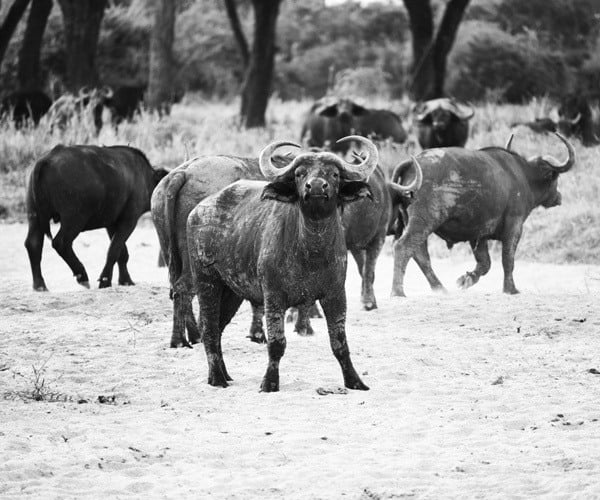 Jongomero is a beautiful camp nestled on the corner of a dry river bed that offers splendid views. Located hours away from the main airstrip, Jongomero has its own quiet corner of Ruaha in the South of the park. It is rare to see another vehicle whilst out on game drive down here and the huge herds of elephant and buffalo are abundant. Lions follow the buffalo relentlessly and predator, prey interactions are frequently seen.
Jongomero is a beautiful camp nestled on the corner of a dry river bed that offers splendid views. Located hours away from the main airstrip, Jongomero has its own quiet corner of Ruaha in the South of the park. It is rare to see another vehicle whilst out on game drive down here and the huge herds of elephant and buffalo are abundant. Lions follow the buffalo relentlessly and predator, prey interactions are frequently seen.
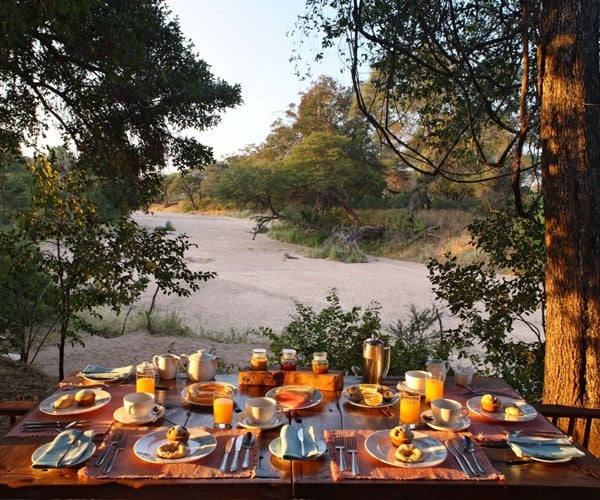 Both Selous and Ruaha are unique in their own ways. Whilst Selous has the meandering waterways that bubble with hippos and crocodiles, Ruaha is a far drier habitat where the wildlife of Southern Africa and Eastern Africa come together. With a vast array of flora and fauna, there are so many different things for you to see in the South of Tanzania without the crowds that often plague other safari locations throughout the world.
If you have the time (and budget) a mixture of the North and South of Tanzania is definitely a must!
Marc Harris is Managing Director of Tanzania Odyssey. Tanzania Odyssey is a leading tour operator that has specialised in Tanzania since 1998.
If you would like to be a guest blogger on A Luxury Travel Blog in order to raise your profile, please contact us.
Both Selous and Ruaha are unique in their own ways. Whilst Selous has the meandering waterways that bubble with hippos and crocodiles, Ruaha is a far drier habitat where the wildlife of Southern Africa and Eastern Africa come together. With a vast array of flora and fauna, there are so many different things for you to see in the South of Tanzania without the crowds that often plague other safari locations throughout the world.
If you have the time (and budget) a mixture of the North and South of Tanzania is definitely a must!
Marc Harris is Managing Director of Tanzania Odyssey. Tanzania Odyssey is a leading tour operator that has specialised in Tanzania since 1998.
If you would like to be a guest blogger on A Luxury Travel Blog in order to raise your profile, please contact us.Did you enjoy this article?
Receive similar content direct to your inbox.


From the look of those wildebeest on their migration I think that’s one crowd that I certainly want to keep out of the way off.
The Great Migration is brilliant for spectating, wouldn’t want to be in the middle of it though.
Going on a safari is such an amazing intense adventure that once you’ve done it you’ll want to keep on doing it. That’s the problem for Africa and now that the whole world’s gone travel crazy safaris are getting busier and busier. Over tourism must be an issue for some of the old favourite safari parks.
A decade or two ago you didn’t have to worry about numbers but that’s changed. Before I book my next safari I will start investigating some of the more remote and less crowded safari options.
Hi Jeff,
You are correct there. The world is becoming more connected so safaris are getting busy.
Finding a quiet area really is a treat and is certainly worth some investigating.
That photograph of the lion sat in the middle of what looks to be a tarmac track is a very sad indictment of the safari industry. The pity of that scene is that man has invaded the lion’s natural environment. It almost looks as if there’s a traffic jam just passing the lion. It is all so intrusive and such an everyday event that the lion has come to accept the congestion. This is all so far from what a safari should be that the people in the safari vehicles may as well have gone to their local zoo.
Hi Nick,
Yes I took this photo whilst in Kruger National Park in August. Tar roads are the main way people move around in Kruger and although it looks ugly, Kruger is one of the best affordable and spectacular safari destinations in Africa. The low prices mean its accessible to everyone, and that is a great thing for conservation.
Selous might be just the destination that my family is looking for. What attracts me is the isolation where you can go for ages without coming across another vehicle. That just hasn’t happened on any other of the safaris I’ve been on. Also it sounds as if there’s plenty to keep two teenage kids occupied.
Hi Phil,
Yes Selous has so much to offer. It caters for everyone and it is so accessible from Dar es Salaam!
I would highly recommend anyone to visit there!
There’s a real ring, a sense of awe to those words – The Serengeti. I’d love to get there sooner rather than later.
Yes you must! It is a fabulous place.
I would be one of those people who find the thought of rain off-putting, but I hadn’t considered that during the rainy season you may get some truly stunning photographs. Better than that is the possibility of lower rates to stay when there’s the prospect of a downpour! It’s hard to imagine the size of some of these places, like Selous, where you could go and not see any other vehicle during your safari drive. The ability to go off track is also good for those who are wanting to be more adventurous. Ruaha definitely sounds more exclusive so I imagine that would be more of an outside the box kind of experience if you could afford it. What’s the average stay for tourists doing a Tanzanian safari? I wonder how long you’d want roughly to make the most of the experience, but still stay on a not too fancy budget?
Hi Kirsty,
Yes the rainy season is gorgeous. The flowers blossom and the grass becomes lush!
The South of Tanzania is a wonderful place and people tend to spend 3/4 nights in each area. The South can offer accommodation for budget and luxury options making it the best of both worlds!
There are also some great deals out there like 4for3 and 7for5 so it is definitely worth asking about!
You talk about safaris bring full of blissful moments of serenity and I sort of get what you mean. I’ve had those peaceful moments gazing across the veldt or watching a waterhole. Although it looks so serene it only takes a twig to snap and the wildlife gets jittery and a flock of birds will take off. It may be tranquil for us human beings but for the wildlife it is a 24 / 7 battle for survival.